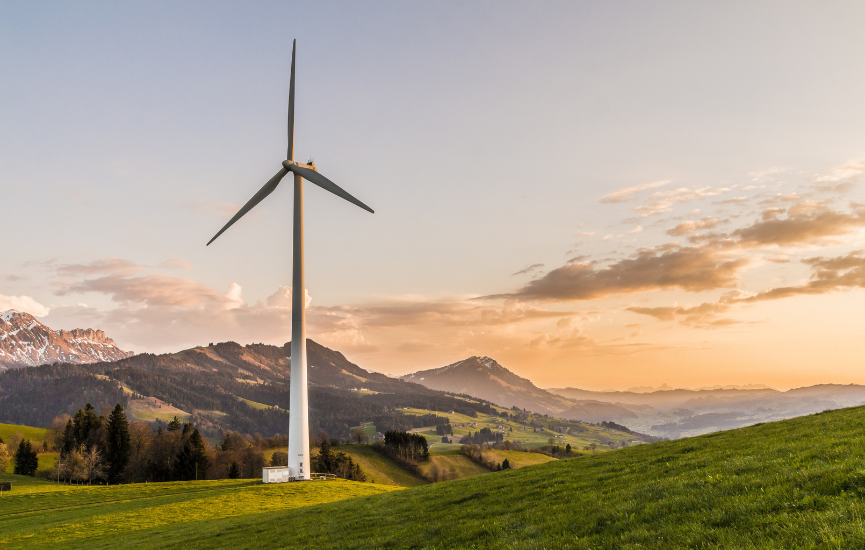Policy Recommendations
- Operating subsidies were justified for the switch to renewable energy sources in the initial phase, but after almost 30 years they need to be reoriented. Investment subsidies and competitive tenders must be the rule and oriented towards electricity market signals.
- The future EU state aid guidelines must – in compliance with the “polluter pays principle” – ensure a fair distribution of cost between households and the energy intensive industrial sector in the Union through restrictive exemption rules from the financing of grid charges.
- Instead of a “green bonus”, the increase of energy efficiency should be a central priority. To ensure a fair transition, a “social bonus” is also needed to reward the creation and maintenance of sustainable and high-quality jobs with a higher aid intensity.
Abstract
The transition of energy production away from fossil or nuclear energy cannot be left to market forces. Therefore, at the turn of the century, the European Union decided on the radical transformation of energy production through state funding of renewable energy sources. In the Guidelines on State aid for environmental protection and energy the European Commission states under what conditions it considers state aid compatible with the Treaty on the Functioning of the European Union (Article 107 TFEU). The guidelines are not legally binding but the European Commission uses them when assessing national funding systems. The current guidelines were established for the period from 2014 to 2020 but have been extended by the European Commission to the end of 2021. Reform is imminent, which also means the chance to make the necessary changes in support of the goals of the “Green Deal”. In order to reduce Europe’s greenhouse gas emissions by at least 55% by 2030, the share of renewable energy sources must be increased significantly and energy efficiency must also be massively improved. However, decarbonisation of the European economy is not primarily a technological question but rather a profoundly social challenge. To gain the support of EU citizens for the transition of energy production, the change needs to be “by design”, not “by disaster”. That means prioritising energy efficiency, implementation of the “polluter pays” principle, a “social bonus” and a fair distribution of costs between households and the energy-intensive industrial sector.
****************************
Subsidies for renewable energy sources: an acid test for a climate-friendly EU
There is no alternative to tackling climate change head on. Global warming and environmental destruction are threatening our natural resources at unprecedented speed. Europe needs to invest in a bold energy transformation now, but it needs to do it right. In order to reduce Europe’s greenhouse gas emissions by at least 55% by 2030, we need to increase the share of renewable energy sources significantly and improve energy efficiency massively. The European economy will only be able to hold its own in global competition if it fully exploits its advantages as a pioneer in clean energy and sustainable, efficient means of production. The reform of European state aid policy for renewable energy sources and climate protection measures will play a key role.
Europe needs to invest in a bold energy transformation now, but it needs to do it right.
One thing is clear: The transition of energy production away from fossil or nuclear energy cannot be left to market forces. Therefore, at the turn of the century, the European Union decided on the radical transformation of energy production through state funding of renewable energy sources. Its policy in this field is essentially set out in the Guidelines[1] on State aid for environmental protection and energy (State Aid Guidelines). They state under what conditions the European Commission considers subsidies compatible with the Treaty on the Functioning of the European Union (Article 107 TFEU). As a rule, state aid is incompatible with the single market and is therefore prohibited. However, there are exemptions from that prohibition including subsidies for environmental and climate protection measures, which encompass subsidies for renewable energy sources. The European Commission has provided Member States with the aforementioned guidelines as an aid to interpretation of the rules. They are not legally binding but the European Commission uses them when assessing national funding systems, i.e. it is bound by its own commitment to observe this guidance (self-binding). The current guidelines were established for the period from 2014 to 2020 but have been extended by the European Commission to the end of 2021. That means reform is imminent. In this Policy Brief we will now take a look at what the cornerstones of that reform should be in our opinion, taking into consideration the perspective of the Austrian Federal Chamber of Labour as well.
“Polluter pays” principle with loopholes
The national funding systems for renewable energy sources are essentially based on two pillars: 1) a purchase commitment for renewable energy sources and 2) the provision of funding through surcharges on grid charges that are payable by electricity customers, such as households and the industrial sector, for use of the public electricity grid.
The system seems convincing at first glance and corresponds to the “polluter pays” principle set out in Article 191 TFEU, according to which large consumers should have to make bigger contributions than economical consumers. However, in most Member States that principle is contravened by hidden subsidies in the form of reimbursement of or types of relief from energy taxes, financing contributions for funding renewable energy sources or grid costs that benefit large energy consumers. Private households are bearing an ever-greater share of the systemic costs due to the transition to a carbon-free economy. That has also been confirmed by a study compiled by Leonhard Plank and Ngoc Doan (2019)[2].
Exemptions should only be allowed following an assessment on a case-by-case basis if they help to achieve environmental or social goals or if energy-intensive industrial sectors are demonstrably at a massive competitive disadvantage vis-à-vis third countries.
The reasoning is that export-oriented companies with high energy consumption are in international competition with other companies, which can obtain electricity at a far lower price. That argument appears to be reasonable. However, the list in Annex 3 and 5 to the EU State Aid Guidelines of the benefiting sectors shows that the motivation is entirely different. The list ranges from production of carpets to hosiery and soaps, adhesives, screws, mattresses, toys and brushes. It is difficult to find a product that is not on the list. Such blanket exemptions are not compatible with the concept of the EU climate strategy or a carbon-neutral economy. The idea was to partially or fully relieve economic sectors, whose competitive position is jeopardised by the costs of funding renewable energy sources or that have high trade volumes, from their contributions to funding renewable energy sources. However, the situation has changed considerably in the ten years since the guidelines came into effect. There is urgent need for reform. Exemptions should only be allowed following an assessment on a case-by-case basis if they help to achieve environmental or social goals or if energy-intensive industrial sectors are demonstrably at a massive competitive disadvantage vis-à-vis third countries.
Start-up investments instead of a state aid drop
Operating aid essentially eliminates the market risk, which is why there is little incentive to act in a way that benefits the grid, i.e. to maintain a continuous electricity supply.
Operating aid may have been expedient and justified in the initial phase of the transition to renewable energy sources. However, after almost 30 years a new approach is needed. Investment grants and competitive tenders must become the norm. They offer greater incentives to react to signals from the electricity market. However, when formulating tenders, attention must be paid to avoiding the disadvantages of operating aid, i.e. ongoing, fixed grants. Operating aid essentially eliminates the market risk, which is why there is little incentive to act in a way that benefits the grid, i.e. to maintain a continuous electricity supply. Operating aid should therefore only be allowed in justified, exceptional cases.
Thus, subsidies should therefore be aimed at next-generation technologies in the form of start-up financing, especially for:
- renewable hydrogen;
- renewable district heating and cooling;
- energy efficiency in social housing,
- research and development on “Carbon Capture and Storage” and “Carbon Capture and Utilization” (CCU).
A study by Johann Baumgartner und Johannes Schmidt (2018)[3] shows what tender formulations and framework conditions are appropriate.
“Social bonus” instead of “green bonus”
EU citizens are not just confronted with the consequences of the COVID-19 pandemic, unemployment and energy poverty, but also face the consequences of the climate crisis and the required transformation of whole sectors of the economy and the energy system. To achieve a carbon-neutral economy, the European Commission recommends the introduction of a “green bonus”[4]. The Austrian Federal Chamber of Labour does not agree with this approach, as we will discuss in the following paragraphs.
To ensure a fair transition, a “social bonus” is needed in accordance with state aid law. It must be possible to reward the creation and/or retention of sustainable, high-quality workplaces with a higher level of state aid. Regarding high unemployment rates and in the interest of a just transition, special attention should be paid to employment opportunities for long-term unemployed and young people, as well as employees negatively affected by the exit from fossil fuels. In contrast, the idea of a “green bonus” does not seem expedient. The avoidance of negative environmental effects should be achieved primarily through regulative law, i.e. through statutory regulation, and not through competition policy. Various requirements, orders and prohibitions, for example in the field of environmental protection, biodiversity protection, improved energy efficiency or in the circular economy must be applicable to all concerned and should not be rewarded in individual cases with state aid to companies. The scope for a “green bonus” also seems highly doubtful because additional state aid schemes that go beyond environmental protection levels or environmental standards can already be approved under the existing State Aid Guidelines.
With respect to a potential further incentive offered by a “green bonus”, experience shows that the justification for exemptions leads to a sophisticated (and often technically complex) funding design that can ultimately result in over-subsidisation.
Each state aid framework and each state aid project should therefore comply with the principle ‘energy efficiency first’.
Instead of a “green bonus”, improved energy efficiency should play a key role. Energy and climate goals can only be achieved if energy consumption can be sustainably decreased. Each state aid framework and each state aid project should therefore comply with the principle “energy efficiency first”. Failure to comply with this principle should result in a reduction of the aid intensity or prevent the eligibility of the project.
No hidden industrial policy
In Europe, the costs of a secure electricity supply are rising sharply. Those costs increase due to both the development of new grids and to an ever-increasing need for measures to ensure grid stability (Redispatch[5]). In order to relieve the burden on large electricity consumers, many Member States are turning towards granting discounts on grid charges. For example, the energy-intensive industrial sector in Germany enjoys a payment relief from electricity grid charges to the order of 80 to 90%. That results in a massive distortion of competition between Member States, and even the relocation of workplaces, and creates disincentives to act in an environmentally friendly way. The more electricity an industrial company in Germany consumes annually, the higher its relief from grid charges. Unfortunately, this approach is currently quite legal, since the European Commission considers[6] the measure to be compatible with the Single Market. At the same time, other grid users such as commercial enterprises and private households have to pay correspondingly higher charges.
To counteract such disincentives, i.e. competition between Member States for the lowest grid charges, more restrictive rules, which are currently lacking, on such exemptions from the financing of grid charges should be included in the future State Aid Guidelines.
Competitiveness of the EU industrial sector and policies vis-à-vis third countries
In order to achieve the EU climate goals, some EUR 1,000 billion needs to be invested yearly, according to a study by business consultancy McKinsey (“Net Zero” study[7]). The study also criticises the fact that EUR 800 billion is already invested today, but in carbon-intensive technologies such as gas heating and diesel traction engines – funds which in future need to be diverted to low-carbon technologies.
The demands of the European industrial sector, in particular large electricity consumers, should also be viewed against that backdrop. While the European Commission is considering import tariffs to protect the European industrial sector against cheap imports from “dirty countries” under the euphemistic name “Carbon Border Adjustment Mechanism”[8], the EU industrial sector fears countermeasures by the third countries concerned. This must be counteracted by bilateral or multilateral climate agreements where the type of calculations and procedures of the compensation mechanism are established with the EU’s key trade partners. Finally, it should not be forgotten that China has also committed itself to an ambitious strategy of climate neutrality. China has set itself the aim of achieving greenhouse gas neutrality by 2060, as a result of which the Carbon Border Adjustment Mechanism (CBAM) vis-à-vis China would no longer apply.
The European industrial sector recommends the introduction of Carbon Contracts for Difference[9] (CCfD) as an alternative model. That mechanism is practised in the UK, for example, and has already been approved by the European Commission. A key element is that large electricity consumers are protected against fluctuations in the CO2 price. Investments in climate-friendly projects are usually only worthwhile for the energy-intensive industrial sector if the CO2 price in the future is high, which, however, is uncertain. Under a CCfD, a given CO2 price is guaranteed by the state. If the actual CO2 price is below the contractually guaranteed CO2 price, the company receives the difference from state funds. And vice-versa, if the CO2 price is higher than the contractual price, the company has to repay the difference to the state. The difficulty lies in correctly determining the contractual price for CO2 to avoid over-subsidisation. Compensation of the difference should be excluded in the case of negative electricity prices in particular. This weak point in the CCfD should be counteracted by determining the contractual price in a transparent, comprehensible and thereby verifiable manner. A functioning emission trading scheme with clear price signals would also be important for this system.
European solidarity and outlook on the future
However, the long-term goal should be cooperation in the financing and implementation of renewable energy projects.
In the European Union numerous funding schemes with varying financial resources, depending on the financial power of the Member States, exist alongside one another. However, the long-term goal should be cooperation in the financing and implementation of renewable energy projects. The European Commission has already established a new mechanism for this purpose (Governance System for the Energy Union).
It is designed to help the Member States cooperate in the financing and implementation of renewable energy projects from the start of 2021 onwards. EU Member States can then make voluntary financial contributions to the mechanism managed by the European Commission. That money is to be invested in the most cost-effective projects in the field of renewable energy sources throughout the EU. This mechanism could make a valuable contribution to make renewable energy production more cost-effective. To gain the support of EU citizens for the transition of energy production, the change needs to be “by design”, not “by disaster”. That means prioritising energy efficiency, implementing the “polluter pays” principle, a “social bonus” and a fair distribution of costs between households and the energy-intensive industrial sector.
[1] Communication from the Commission, Guidelines on State aid for environmental protection and energy 2014-2020, https://eur-lex.europa.eu/legal-content/EN/TXT/HTML/?uri=CELEX:52014XC0628(01)&from=EN
[2] Plank, L., Doan, N. (2019), Verbrauch- und Kostenverteilung im österreichischen Stromsektor (Kurzstudie), Wien, Kammer für Arbeiter und Angestellte für Wien (AK Wien), https://www.arbeiterkammer.at/interessenvertretung/wirtschaft/energiepolitik/Power_Burden_2019.pdf
[3] Baumgartner, J., Schmidt, J. (2018), Die Neugestaltung des österreichischen Fördersystems für erneuerbaren Strom, Wien, Kammer für Arbeiter und Angestellte für Wien (AK Wien), https://www.arbeiterkammer.at/service/presse/FoerdersystemErneuerbare_Schmidt-Baumgartner-BOKU-AK_092018.pdf
[4] See: https://ec.europa.eu/competition/information/green_deal/call_for_contributions_en.pdf
[5] See: https://www.apg.at/en/Energiezukunft/Redispatch
[6] Commission Decision of 28.5.2018 on aid scheme SA.34045 (2013/c) (ex 2012/NN) implemented by Germany for baseload consumers under Paragraph 19 StromNEV: https://ec.europa.eu/competition/state_aid/cases/247905/247905_2014230_596_2.pdf
[7] McKinsey & Company (2020), How the European Union could achieve net-zero emissions at net-zero costs, https://www.mckinsey.com/business-functions/sustainability/our-insights/how-the-european-union-could-achieve-net-zero-emissions-at-net-zero-cost
[8] Legislative Train Schedule, A European Green Deal: Carbon Border Adjustment Mechanism as part of the European Green Deal / Before 2021-7, https://www.europarl.europa.eu/legislative-train/theme-a-european-green-deal/file-carbon-border-adjustment-mechanism
[9] Federal Ministry for Economic Affairs and Energy (2020), What are actually carbon contracts for difference? https://www.bmwi-energiewende.de/EWD/Redaktion/EN/Newsletter/2020/11/Meldung/direkt-account.html
ISSN 2305-2635
The views expressed in this publication are those of the authors and not necessarily those of the Austrian Society of European Politics or the organisation for which the authors are working.
Keywords
Environmental and Climate Protection, Energy and Environmental Aid, EU State Aid Guidelines, Renewable Energy, Energy Efficiency, Green Deal, Social Bonus, Green Bonus, Carbon Border Adjustment, Carbon Contracts for Difference
Citation
Herzele, D., Wixforth, S. (2021). Subsidies for renewable energy sources: an acid test for a climate-friendly EU. Vienna. ÖGfE Policy Brief, 07a’2021








